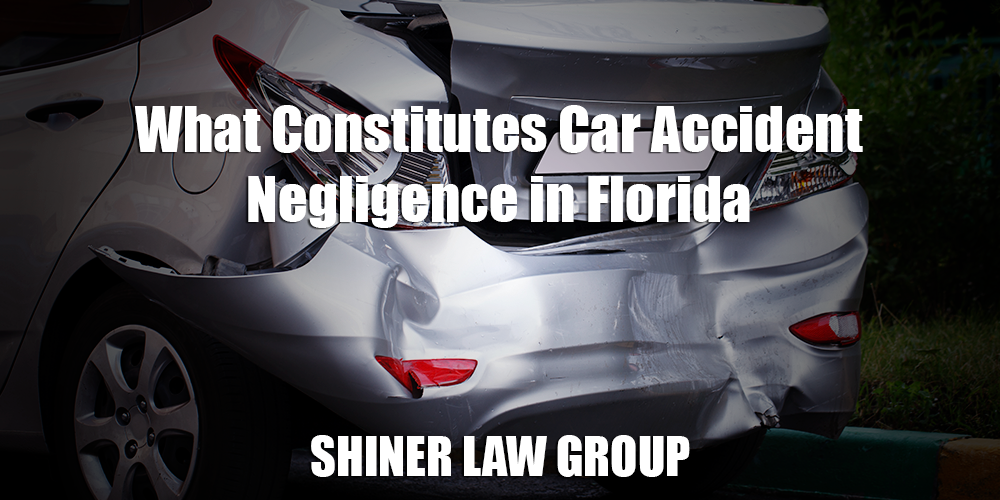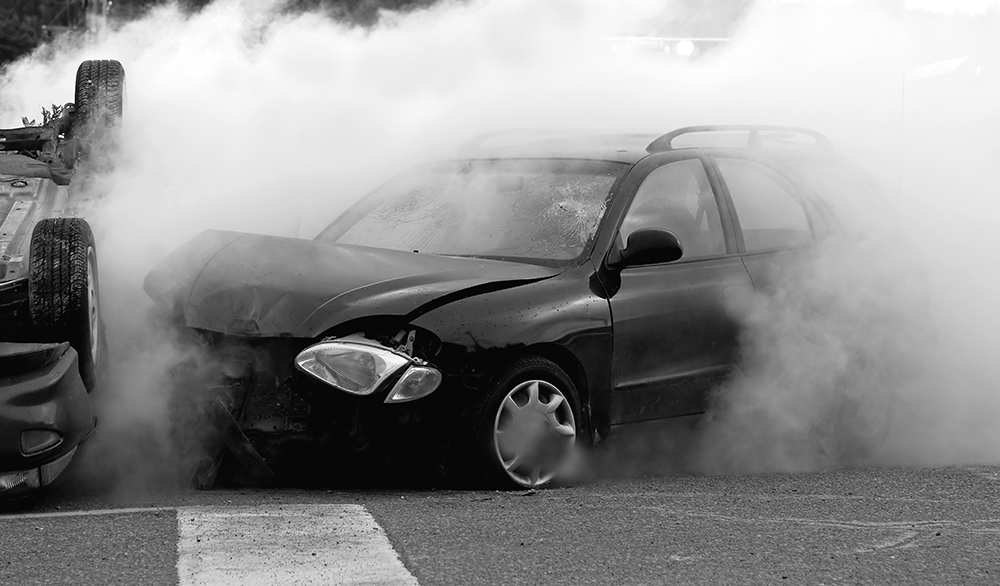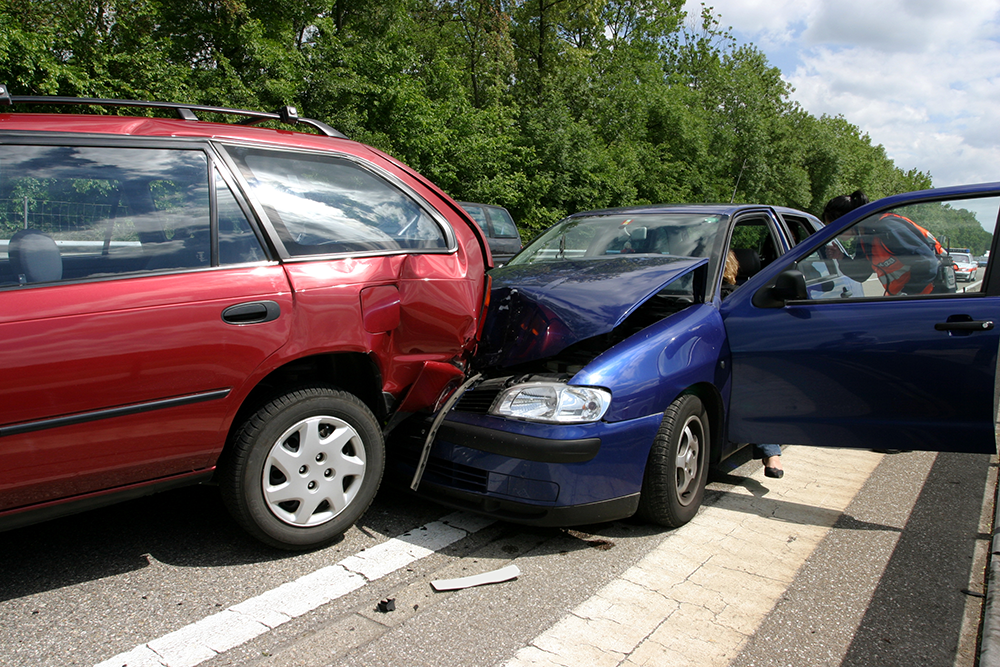Cars are one of the most convenient forms of transportation in Florida, and those who own vehicles can enjoy the freedom of movement and time constraints. However, all drivers on the road are expected to obey traffic rules. Driving responsibility is paramount to personal safety, as well as the safety of other vehicles and pedestrians.
Although strict rules are in place, safety is not always guaranteed. Due to the human nature of errors, many drivers make mistakes and poor decisions while driving, leading to staggering road accident statistics. Unfortunately, most of these accidents happen due to negligence, often leading to life-altering injuries. In severe circumstances, victims also end up dying.
Should one be lucky enough to survive a car accident, they must hold the driver responsible for all damages. This is entirely possible, especially if they can prove negligence. They also have the power to pursue a lawsuit, which will require an experienced personal injury attorney by their side.
If you’re someone who’s been in a car accident, and you wish to hold the other person accountable for what has transpired, this comprehensive guide is for you. We talk about proving negligence and how to successfully do so so that you’ll be able to reap the compensation you deserve.
Without further ado, here’s everything you need to know about driving negligence:

What does it mean to prove negligence?
When a driver traverses on the road while distracted or in a dangerous state, he essentially places others around him at risk for death and injuries. Should a person become involved in an accident, they will want to hold the negligent driver accountable for what has happened. However, to do so successfully, they must be able to satisfy what is deemed the “burden of proof.”
The burden of proof requires evidence gathering, all of which should point out that such injuries happened due to the driver’s direct result in question’s negligence. Pieces of evidence may include police reports about the accident scene, medical records and diagnosis results, photographs and videos of the accident, and even witnesses’ testimony.
Most car accident lawsuits are based on negligence, as no one plans to cause such an occurrence. As a result, all negligence claims are subject to a thorough analysis, including moments leading up to and following an accident. In other words, it needs to be proven that the party at fault failed to follow their duty of safety.
What are the essential elements of a negligence claim?
Negligence is made up of individual elements, all of which are difficult to decipher. It pays to have a lawyer by your side to understand these terms fully, but a little knowledge goes a long way. To help you better grasp how these elements affect your claim to damages, here’s a quick rundown of all the details:
- Duty of Care: Each person has a legal responsibility to adhere to the standard of care, especially on the road. It means that all licensed drivers are expected to operate their vehicles safely, ensuring that all parts of the car are working correctly and that they are in a state to drive safely. This means they cannot be potentially harmful to others, including other drivers, passengers, pedestrians, and property. In essence, all drivers must follow traffic laws with the utmost reverence.
- Breach of Duty: From the concept itself, a violation of duty means that the driver has failed to adhere to the task discussed above. This means that the driver has been unable to operate their vehicle correctly, causing an accident that has ended up affecting other drivers, passengers, pedestrians, or properties. Should the victim prove that the driver has violated traffic laws, they will have gained a substantial piece of evidence in proving negligence.
- Causation: Proving that there has been a breach in duty is paramount, but another critical factor—causation should support it. In other words, you must be able to prove that the entire accident has caused your injuries and other damages. It would be best to show that the other party should have practiced more caution; the accident will never have happened.
Causation can be further broken down into two categories—cause-in-fact, which pertains to the direct effect of the breach of duty, and proximate cause, which relates to the indirect impact of the breach of duty.
- Damages: All the losses and costs associated with the accident and injuries are collectively known as the damages, which are always expressed in monetary means. Damages come in two categories—economic and non-economic. Economic damages pertain to the concrete numbers, all of which can be supported by documentation. Such damages pertain to medical bills, repair bills, and even lost wages.
Non-economic damages, on the other hand, pertain to all damages that cannot be put into numbers, such as emotional and psychological trauma. These damages are known as pain and suffering and can also be claimed as monetary values.
What are examples of negligence?
There are various types of car accident negligence, and it always pays to learn a little more. Here are the following types of failure on the road that can help you win your case faster, allowing you to be awarded the damages you deserve. Here’s what you need to know:
- The driver’s failure to obey traffic rules: This pertains to a variety of actions, including knowingly running red lights and stop signs, as well as failing to observe proper speed limits. This also means texting while driving, as well as driving too slowly. All these can be deemed as a breach of duty.
- The driver’s failure to maintain full control of the vehicle: This type of negligence pertains to sudden stops, swerving, and even lane changes; losing control because of excessive speed is also a part of this, all of which are signs of a breach of duty.
- The driver’s failure to remain alert on the road: Upholding the duty of care means staying alert at all times on the road so that any surprise barriers, occurrences, and other road conditions will be met well with appropriate reactions. Driving under the influence is strictly prohibited, as well as driving sleep-deprived. Distracted driving is also part of a breach of care, primarily if the driver has caused an accident due to mobile device use.
- The driver’s failure to properly use or maintain the vehicle’s parts: As a vehicle owner, the driver is expected to keep their car up and running for safety. Bad breaks and broken headlights can lead to severe consequences, including accidents resulting in death. This also includes the failure to use appropriate turn signals and failing to maintain high beams.
What are the most common injuries you can get following a car accident?
Soft tissue injuries
These injuries pertain to damages to the body’s connective tissues, including the tendons, ligaments, and even muscles. This is one of the most common types of injuries following a car accident.
Scrapes, cuts, and other open wounds
Car collisions do not only pertain to injuries you can sustain from damaged vehicles—the objects present in the car can also pose dangers, as they can quickly become projectiles that can cause damages to the passengers. Such items can include everyday things, like books, GPS systems, cellphones, and even eyeglasses.
Thankfully, most scrapes and cuts are relatively minor injuries, but some open wounds can lead to a significant loss, making it necessary for them to be stitched up.
Head injuries and brain trauma
Head injuries happen due to numerous reasons and can occur in varying degrees. Some are relatively minor, such as concussions. Others, however, can quickly lead to severe consequences. Bear in mind that cars suddenly stopping are subject to the law of inertia, causing the passengers into unnatural positions and sudden surges. Their muscles in the neck and back become strained and unable to support themselves well, their heads become compromised.
Most injuries happen due to impacts with the windows, steering wheel, and other car areas. Bruises and lacerations can quickly form, but others can end up suffering from brain bleeds and other closed head injuries that cause brain swelling, damage, and other life-altering injuries.
Chest damages
Chest injuries happen due to collisions and impact, leading to bruises and contusions. However, in more severe cases, a person can quickly suffer from broken ribs in a single blow. Unfortunately, broken ribs almost always end up puncturing other organs, such as the lungs, heart, and even lover.
Chest damages are common among those behind the dashboard and steering wheel, as these areas allow for little to no movement. Any sudden stop can result in the chest colliding with the obstruction, causing damage.
Arm and leg damages
The same instances surrounding head and chest injuries can happen to the arms and legs, leading to bruises, dislocation, and broken bones. Passengers usually end up slamming against the door, leaving their arms and legs injured.
Note: While it can be terrifying to witness or experience the aftermath of a car accident, especially when there is blood involved, bear in mind that some injuries do not immediately show. This depends on the nature of the damage, but some victims end up suffering weeks and months after the injury, proving to be fatal.
This usually happens in injuries surrounding the brain, so it’s always best to seek medical attention as soon as possible—even if you feel fine. Any discomfort or uneasy feeling must be reported immediately so that tests and diagnostics can be carried out.
Understanding Florida’s Car Accident Statute of Limitations
A statute of limitations essentially pertains to a law that sets a time frame limit, a mere window in which the victim or person affected can file a lawsuit. Should you miss the time limit stated by the law, and you attempt to file a car accident lawsuit long after the deadline has passed, know that you will be trying to win a lost cause. The Florida court system operates on stringent rules and will dismiss your case.
You will be given up to two years, which begins on the date of the actual accident. This allows you ample time to gather evidence on negligence, especially if you have suffered from life-altering injuries. It would help if you were mindful about the timeframe, however, so it’s always best to enlist the help of a lawyer.
How can a lawyer help me claim damages after a car accident?
There’s no other way to place it – a car accident lawyer will become your most trustworthy ally following the accident. They’ll dedicate themselves to winning your legal battle for you, even if you’re not required to have a legal representation.
They’ll help you gather all the information you need, the pieces of evidence you need to procure, and of course, understand the legal matters surrounding your claim. In other words, you’ll be approaching the lawsuit with peace of mind and confidence, allowing you the opportunity to enjoy more favorable results.
Expect your attorney to aid you with the following tasks:
- Investigate your claim thoroughly, ensuring that no gaps are left
- Calculate the damages you can claim
- Engage in settlement negotiations and shield yourself from insufficient offers
- Interview witnesses and compile testimonies
- Gather all relevant documents
Enlist The Help Of A Car Accident Lawyer In Florida
Car accidents can be a traumatic experience. You’ll be left with emotional trauma and broken limbs, which can be more life-altering than you could ever imagine. Such circumstances happen mostly due to negligence on the part of the driver, which can worsen the feelings of stress, frustrations, and of course, anger. However, as a victim of a car accident, know that you are entitled to damages that make life a little bit easier, especially since the claim can potentially make your recovery seem more bearable.
To make sure that your case remains in capable hands, contact a car accident attorney in Palm Beach, Florida, today. Allow the experts of Shiner Law Group to discuss your chance to gain the justice you deserve. We’ll advocate on your behalf so that you can receive compensation to help you fully recover. Book a free consultation with a lawyer today.


